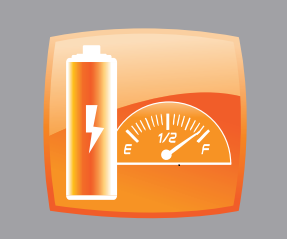Powering Your Printer: What You Need to Know About Lithium-Ion Batteries
 Datamax-O’Neil printers are powered by lithium-ion batteries. Lithium-ion is the fastest growing battery chemistry type in the world. In less than two decades, it has progressed from the research and development domain to more widespread use, to the point that they are rapidly becoming the world’s most popular portable secondary battery chemistry. They’re the battery of choice in everything from cell phones and digital cameras to printers and portable PCs and tablets. Lithium-ion batteries are a family of rechargeable batteries in which lithium ions move from the negative electrode to the positive electrode when discharging, and in the opposite direction when charging. They have been referred to as “rocking chair batteries†because of the back-and-forth ionic action during charge and discharge.
Datamax-O’Neil printers are powered by lithium-ion batteries. Lithium-ion is the fastest growing battery chemistry type in the world. In less than two decades, it has progressed from the research and development domain to more widespread use, to the point that they are rapidly becoming the world’s most popular portable secondary battery chemistry. They’re the battery of choice in everything from cell phones and digital cameras to printers and portable PCs and tablets. Lithium-ion batteries are a family of rechargeable batteries in which lithium ions move from the negative electrode to the positive electrode when discharging, and in the opposite direction when charging. They have been referred to as “rocking chair batteries†because of the back-and-forth ionic action during charge and discharge.
Chemistry, performance, cost, and safety characteristics vary across lithium-ion battery types. Unlike disposable lithium primary batteries, lithium-ion electrochemical cells use an intercalated lithium compound as the electrode material instead of metallic lithium. The positive electrode material is typically a metal oxide with a layered structure, such as lithium cobalt oxide (LiCoO2), or a material with a tunneled structure, such as lithium manganese oxide (LiMn2O4), on a current collector of aluminum foil. The negative electrode material is typically a graphitic carbon (also a layered material) on a copper current collector. In the charge/discharge process, lithium ions are inserted or extracted from interstitial space between atomic layers within the active materials.




